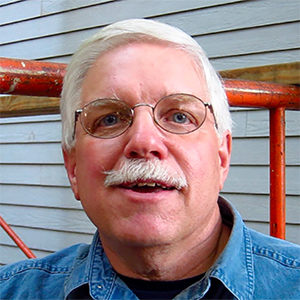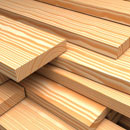Get the Most Heat: How to Select Firewood That Really Performs
Published in Home Articles
Have you ever tossed a few logs into the fire, only to watch them sputter and smoke instead of blaze bright and hot?
Many people think wood is just wood, but the truth is that not all logs burn the same. The type of firewood you choose can mean the difference between a cozy night and a chilly disappointment.
This article will guide you in choosing the best firewood to get more heat, less smoke, and a longer-lasting fire.
Why the Right Firewood Makes All the Difference
The warmth and glow of a good fire depend on more than striking a match. The kind of wood you choose shapes how much heat you get, how long the fire lasts, and how cleanly it burns.
Hardwoods That Hold the Heat
Hardwoods are the champions of long, steady burns. Trees like oak, hickory, and maple have dense fibers that hold energy, releasing it slowly as they burn. This density means more heat per log and fewer trips to the woodpile.
Seasoned hardwood is even better. As the moisture leaves, the wood burns hotter and with less smoke. Dry hardwood gives a deep, steady flame that warms the room and leaves rich coals for later fires.
Softwoods for Quick Fires
Softwoods are fast and catch easily. Pine, spruce, and fir are great when you want heat in a hurry or need to start a cold stove. Their lighter weight and sap content help them burst into flame almost at once.
These woods are perfect for kindling or short fires. They create a lively blaze but fade quickly, leaving behind less heat. Softwoods are best used to start a fire that will later be fed with hardwood.
How Moisture Levels Affect Heat Output
Wood may look solid, but it acts like a sponge. Even when cut and split, it can hold a surprising amount of water. This water affects how the wood burns because energy must first dry it before flames can take hold.
As the wood heats up, moisture turns into steam. That steam rises and cools the fire, lowering the temperature in your stove or fireplace. The wetter the wood, the less heat you get from it, no matter how much you burn.
When wood is too wet, much of the fire’s energy goes into boiling off the water instead of producing warmth. This process wastes heat and makes the fire burn unevenly. You might see more smoke and less flame, showing that the fire is struggling to stay alive.
Dry wood, on the other hand, burns hot and clean. It releases energy efficiently, turning most of its stored carbon into heat rather than smoke. The result is a steady fire that warms your home faster and keeps the stove glass clear.
The Secret to Spotting Well-Seasoned Wood
Knowing when firewood is ready to burn takes more than a quick glance. Each clue reveals how much water still hides inside the wood, and these signs can help you choose logs that will burn hot, clean, and bright.
Look for Cracks and Color Changes
Well-seasoned wood wears its age on the outside. As moisture leaves, the ends split and form small cracks known as checking. These cracks show the wood has dried and shrunk, meaning it will catch fire more easily.
The color also shifts as the wood cures. Fresh-cut wood looks bright or greenish, while seasoned wood fades to gray or light brown. This dull color signals that the drying process is nearly done and the wood is ready to burn.
Feel the Weight
Dry wood is lighter than green wood because much of its water has evaporated. When you lift a seasoned log, it feels easier to handle and less dense. This drop in weight is one of the simplest ways to tell seasoned wood apart.
If you compare two logs of the same type, the heavier one is likely still green. Water adds a surprising amount of weight to fresh wood. Choosing the lighter piece usually means you will have a cleaner and hotter fire.
Listen to the Sound
A seasoned log speaks with a clear, sharp tone when struck against another. The hollow ring means the inside is dry and free from trapped moisture. In contrast, wet wood gives a dull, heavy thud.
Testing the sound is an old trick many woodcutters still trust. It is fast, easy, and often more reliable than looks alone. The dry echo of seasoned wood is a sign that your fire will light with less effort.
Check the Bark and Ends
The bark on seasoned wood often starts to peel or flake away. As the wood dries and shrinks, it loosens its outer shell. This natural shedding shows the moisture has dropped to a good level for burning.
The ends of seasoned logs also feel dry and rough to the touch. You might see darker lines or slight cracks running through them. These marks confirm the wood has lost much of its water and is ready for the firebox.
Top Firewood Types for Long, Hot Burns
The best fires start with the right kind of wood. Some trees produce dense, slow-burning logs that give steady heat and glowing coals. Others burn fast and bright, good for quick warmth but not long nights.
Oak
Oak is one of the best firewood choices for long, hot burns. It is dense, which means it burns slowly and gives steady heat for hours. Once lit, it produces strong coals that keep a fire going through the night.
Oak also burns clean with little smoke when properly seasoned. Its heat output makes it ideal for cold winters and wood stoves. While it can take time to dry, the result is worth the wait for those who want lasting warmth.
Many UK homeowners who want premium kiln-dried oak logs even choose to visit Buyfirewooddirect.co.uk to source high-quality firewood delivered within days.
Hickory
Hickory is known for its intense heat and pleasant aroma. It burns even hotter than oak and creates a thick bed of coals. Many people use it for both heating and cooking because of its flavor and strength.
Hickory wood is heavy and takes longer to season, but that density is what makes it powerful. Once dry, it gives a steady, strong flame with very little smoke. It is prized for those who want fires that last and perform well.
Maple
Maple offers a balanced burn that is easy to manage. It lights more easily than oak but still delivers a steady heat. The flames are bright, and they produce good coals for a consistent fire.
Hard maple, like sugar maple, burns hotter and longer than soft maple. It also splits cleanly and has a pleasant, mild scent. Many people choose Maple for its mix of performance and ease of use.
Ash
Ash is a favorite because it burns well even when not fully seasoned. It gives off a steady, reliable heat and produces little smoke. The wood is lighter than oak but still dense enough for long burns.
It splits easily and lights without much effort, making it friendly for beginners. The coals it leaves are perfect for keeping embers alive overnight. Ash combines convenience and power in one dependable firewood.
Beech
Beech wood burns hot and clean once it is dry. It is similar to oak in density and performance, with a smooth, even flame. The heat it gives is steady and strong, perfect for heating a home.
However, beech takes time to season and can be hard to split. When properly prepared, though, it rewards the effort with long-lasting fires. Its clean burn and solid heat make it a strong choice for those who want dependable warmth.
How to Store Firewood to Keep It Dry and Ready
Storing firewood the right way keeps it dry, clean, and ready to burn. These steps focus on where to stack it, how to protect it from the weather, and what to avoid so your wood stays in top condition.
Choose the Right Location
Firewood needs a spot with good airflow and sunlight. A breezy, open area helps moisture escape from the wood over time. Avoid stacking it too close to your home, since it can attract bugs and rodents.
Keep your woodpile off the ground to stop it from soaking up water. A few pallets or a raised rack can make a big difference. Moisture from the soil is the main reason many woodpiles rot from the bottom up.
Stack Firewood for Airflow
Proper stacking is the secret to well-seasoned wood. Stack logs loosely with the cut ends facing out so the wind can move through them. This airflow speeds drying and keeps the wood from molding.
Make sure each row is stable but not packed tight. Tight stacks trap moisture and slow the drying process. The goal is balance, a solid pile that breathes while it dries.
Cover Only the Top
It might seem smart to wrap your woodpile, but full coverage locks in moisture. The best way is to cover only the top with a tarp or sheet of metal roofing. This keeps rain and snow off while letting the sides stay open to the air.
Tie down the cover so it stays in place during wind or storms. Always leave space for air to flow around the pile. This method keeps wood dry on the outside and cures it perfectly inside.
Keep Wood Away from the House
Stacking firewood against a wall or under a porch might feel convenient, but it invites problems. Termites, ants, and mice often move from the woodpile into your home. Even dry wood can attract pests looking for shelter.
Instead, keep your main pile at least twenty feet from your house. Bring in smaller amounts as needed for daily use. This habit keeps pests outside and your home safer.
Rotate and Use Older Wood First
Seasoned wood only stays perfect for so long. Over time, it starts to lose density and burns less efficiently. That is why rotating your stack and using older logs first is smart.
When you add new firewood, stack it behind or under older pieces. This first-in, first-out method keeps your supply fresh. It also helps you notice any wood that has begun to soften or rot before it spreads.
Tips to Make Every Log Burn Cleaner and Hotter
Every fire can burn cleaner and hotter with the right approach. These ideas focus on how to handle your firewood, your fire setup, and your habits to get the best performance from every log.
Maintain Good Airflow in the Fire
A fire needs oxygen to burn hot and steady. When air cannot move through the wood, the flames struggle, and smoke builds up. Keeping the logs spaced apart lets the fire breathe and burn cleaner.
Adjust the damper on your stove or fireplace to control airflow. More air at the start helps the fire catch, while a steady flow keeps it strong. When the flames move freely, the heat output climbs and the smoke drops.
Burn Smaller Splits
Smaller pieces of wood catch fire faster and burn more evenly. They allow air to reach the center of the fire, creating steady heat. Large logs burn slower but can smother the flames if packed too tightly.
Split big rounds into smaller chunks before stacking them to dry. Doing this also helps the wood season faster by exposing more surface area. Once burned, these smaller splits make clean, efficient heat.
Keep the Chimney Clean
A dirty chimney blocks airflow and reduces heat. Creosote, a black tar-like buildup from smoke, can coat the inside walls. This not only cools your fire but also increases the risk of chimney fires.
Clean your chimney at least once a season, or more if you burn often. A clean flue pulls air smoothly, helping your fire burn hotter and safer. Regular care keeps both your home and your fire in top shape.
Burn Smarter and Stay Warmer
Firewood is more than fuel. It is a link between nature, comfort, and the ancient need for warmth. Choosing the right wood turns a simple fire into a steady source of heat and calm that fills your home with life.
When you take the time to pick, season, and store your wood well, you do more than stay warm. You build comfort the old way, by care and patience.
Was this article helpful to you? If so, make sure to check out our blog for more useful information and resources.




























Comments